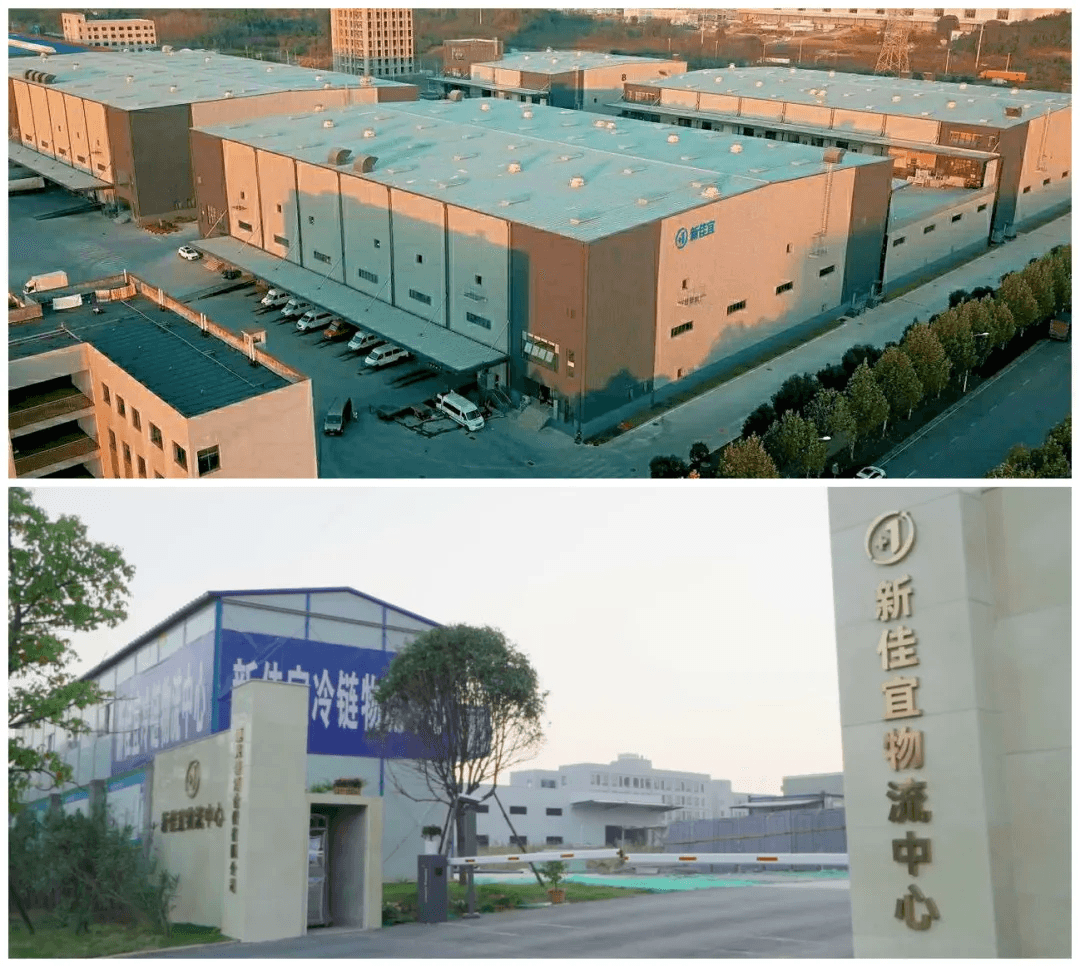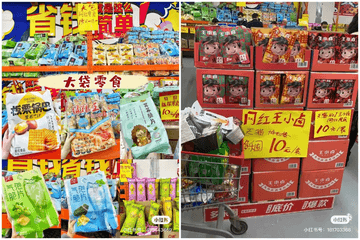The traditional hypermarket format is gradually fading, with Carrefour China as a representative example—once a dominant force in retail chains, now retreating from the mainstream stage. In contrast, various types of community-based small stores, which outperform in terms of convenience, service experience, and cost-effectiveness, are developing at a rapid pace.
Retail can be divided into "long-distance" and "proximity" formats based on fulfillment needs. Offline, long-distance retail is undergoing stratification, centered around hypermarkets and shopping malls covering a 10-kilometer radius, with leading players growing while the mid-tier is steadily losing market share. Meanwhile, proximity retail, mainly community stores serving nearby residents, is differentiating itself through product categories and pricing, and these advantages cannot be achieved without efficient supply chains.
Community-based proximity retail is a key sector under GenBridge Capital's investment theme of the new generation of “retail chains.” Our portfolios, New Joy Mart Convenience Stores and Duoletun Discount Stores, are outstanding examples that we continue to study to understand the evolution of China's proximity retail:
New Joy Mart, a local convenience chain emerging from Hunan, has become deeply embedded in residents' daily lives, particularly standing out with differentiated offerings like fresh milk.
Duoletun, a super popular discount store brand in Henan known for its prices that “crush Pinduoduo,” has captured the hearts of younger consumers with snacks, instant foods, and emerging brands.
As traditional hypermarkets withdraw, new opportunities for retail channel shifts are emerging. For professionals in the field, how can such opportunities be turned into growth? At this pivotal moment of channel transition, Victor Zhang, GenBridge Capital's founding partner, sat down with Minyi Wu, founder of New Joy Mart and Junliang Chen, founder of Duoletun, to discuss evolving retail channel trends, shifting consumer demands, and how each of them seized entrepreneurial opportunities in the process of industry chain evolution.
The Big Trend: Stratification in long-distance retail, rise of proximity retail
Junliang Chen: In the past, each region in Henan had dominant hypermarkets with strong pricing and bargaining power across most product categories. In recent years, hypermarkets have also stratified. Nationally, players like Freshippo, Costco, and Sam’s Club have seen strong growth, while traditional hypermarkets have rapidly declined—with fewer full-priced products, higher discount ratios, and falling sales volumes all indicating a shift in retail channels.
In contrast, small-format stores are rising rapidly. For example, due to the underdevelopment of convenience stores in Henan, the region has fostered the growth of milk delivery stations. In the past two years, these stations have significantly increased both store numbers and consumer penetration.
In reflecting on Duoletun’s development, we’ve consistently thought about the key drivers in retail. I summarize this as retail’s “Impossible Triangle”: experience, convenience, and price. If we evaluate traditional chain hypermarkets by these three points, they no longer hold any competitive advantage.
Convenience: Today in Zhengzhou, a customer has 7–8 different ways to buy a bottle of soda. Going to a hypermarket is among the least convenient, as these stores are generally located to cover populations of 100,000 or more. This is where the advantages of community stores and convenience supermarkets become evident.
Experience: This includes all human-centered services. While some hypermarkets like Pangdonglai offer outstanding service experiences and still hold market share, most traditional chains struggle to reach that level of service and management.
Price: Hypermarkets are the worst fare here. Their procurement systems, based on traditional business models, accumulate costs at both the front and back ends, pushing up retail prices.
Duoletun's philosophy is to offer the lowest prices while still providing relatively better convenience and service. While convenience stores and premium hypermarkets like Sam’s Club and Pangdonglai excel in convenience and service, Duoletun offers unique strengths. Our core competitiveness is price; theirs is convenience and service. There’s no direct conflict in positioning—each has its own market. However, when a retail format loses out on all three points of the "Impossible Triangle," consumers will abandon it.
Minyi Wu: As a proximity-based small-format retailer, New Joy Mart’s core feature is its product category advantage. We have a large proportion of dairy products, which have doubled for three consecutive years. As consumer awareness increases, especially in refrigerated and frozen goods, both overall and per-store performance have grown significantly, contributing more to gross margins. Our fresh milk offerings are priced competitively with ambient milk, but offer better freshness.
Fresh milk used to be sold mainly in hypermarkets. As hypermarkets declined, convenience stores have become the mainstream in Hunan’s fresh milk market, essentially replacing dedicated milk stations. We began investing in fresh milk in 2017, cultivating customer awareness early on. Over time, it became a habit for customers to come to New Joy Mart for fresh milk.
Victor Zhang: Fresh milk is a short-shelf-life product that must be purchased frequently—there's no way to stock up in bulk. As a result, consumers are increasingly inclined to buy it from nearby channels. The convenience offered by New Joy Mart’s retail network helps unlock that demand, and this is exactly the core value of proximity retail.
Consumers: From “more, faster, better, cheaper” to “better and cheaper”
Minyi Wu: Retail used to be about the four pillars—“more, faster, better, cheaper.” The “more” part has mostly been solved by online channels. Now, “cheaper” is taking precedence, rising to the top of consumers’ priorities. Hypermarkets no longer have an edge in any of the four aspects—variety, speed, quality, or cost structure.
Today's consumer demands are polarized: either cheaper or better—and the most successful products manage to be both. The offline channel for cheaper goods is mainly discount stores, while online it's platforms like Pinduoduo. For New Joy Mart, customers’ expectations for “better products” focus on freshness—which is why our fresh milk's core strength lies in its freshness, while we aim to keep its price close to that of ambient milk.
Offline, the demand for “more” variety is actually decreasing. Consumers don’t need to choose among dozens of fresh milk brands—they want fewer, better choices to avoid decision fatigue. “Fast” has become a baseline expectation, but convenience stores still have a chance to outperform—whether it's through in-store shopping or home delivery. In Hunan, New Joy Mart ranks first in retail delivery revenue across major platforms among its peers.
To summarize, our first advantage is speed, and we’re working to make it even faster. Second is focusing on better and fresher products, and third is cost-saving—because operating convenience stores inherently comes with higher costs.
Junliang Chen: In the end, cost-effectiveness is the foundation of consumer demand in retail. From the perspective of cost and efficiency, logistics expenses have dropped significantly. While offline used to have lower fulfillment costs than online, now online is often more economical at the same order value. In terms of frequency, offline orders, based on public consumer needs within a store's local area (LBS), are actually highly fragmented. In such a context, hard discounting doesn’t work well offline because demand density is too low.
That said, offline still has its strengths—for example, cold-chain products like chilled and frozen items, and high-trust categories such as infant formula, where online and community group-buying channels are weak. Another category is food and beverages. Today, many subcategories within food and beverages are seeing slower growth online. These products are naturally suited to offline, especially water, which has high logistics costs. That’s why Duoletun first entered the market through the food and beverage category.
Moreover, considering that online category growth is unlikely to accelerate dramatically in the long run, Duoletun can still beat online platforms on price by optimizing cost and efficiency. We’re gradually reclaiming market share in our advantageous categories. Offline offers a “what you see is what you get” experience. As store density increases, we get closer to consumers—and our advantages become more apparent.
Supply Chain: Radical simplification makes business transparent
Minyi Wu: To gain a category advantage, New Joy Mart has made many backend innovations. We’ve secured exclusive distribution for around 100 quality brands, some of which have seen sales multiply tenfold. Distributors are under pressure across the board—platforms like Pinduoduo, Xing Sheng You Xuan (community group buying), snack collection stores, and Sam’s Club are all squeezing their margins. New Joy Mart excels at launching new products. We even use our own channels and resources to help manufacturers promote new items through in-house marketing spend.
During the pandemic, we gradually began acting as direct agents for manufacturers. On the logistics side, we built our own cold-chain distribution system capable of daily deliveries to thousands of stores, with a multi-temperature, semi-automated, and mechanized system. This reduces costs and doubles service quality and efficiency compared to traditional convenience stores.Beyond acting as an agent and cooperating with cold-to-fresh suppliers, we’re also experimenting with in-house production. For instance, we now manufacture and directly sell items like frozen drink cups in our stores.
By stepping into the supply chain, we’ve shortened it significantly, integrating the factory, store sales, logistics, inventory management, and ordering cycle through a unified data system. Where the original supply chain from factory to customer might have required five decision nodes, now it's just three, and in the future, maybe only one. This creates radical simplicity in efficiency, waste reduction, and profitability.

Junliang Chen: For hard discount retail, a stable supply chain is even more critical. Every step of our operations emphasizes predictability and certainty, from upstream procurement to warehouse ordering, timing and order volumes are all planned and expected. The core of hard discounting is solving cost and efficiency issues based on a stable supply chain. Ultimately, we aim for every customer to always find the product they expect at Duole Tun—if someone wants a Coke, it should always be right where they expect it to be.
Pricing is also kept simple and transparent, which directly impacts consumer-side pricing. Today, the quotes we receive from our distributor partners are very different from before, everything has become extremely simplified and clear. Internally, our procurement system and consumer interactions are also streamlined, with uniform pricing and almost no promotional campaigns.
It’s inevitable that Duoletun is moving toward becoming a retail-manufacturer hybrid. Our first goal is always to help customers save money. But saving money often contradicts traditional branding. To deliver the greatest savings for customers, we have to push ourselves to collaborate directly with manufacturers and develop better solutions than anything currently available on the market.

Victor Zhang: Returning to the essence of retail, I believe it’s about creating a more stable supply chain under the condition of matching supply and demand. Historically, the retail companies that have endured across cycles are those that could establish a stable supply chain, gain scale advantages, respond to consumer demand, and continuously improve efficiency.
Take Walmart for example: it built a global supply chain that brought goods from around the world into developed markets. Its consistent, high-volume orders allowed manufacturers to scale up production, logistics, and distribution, while consumers gained access to the lowest global prices—creating massive value.
In the future, China’s retail sector will also be driven by supply chain upgrades. China is already the world’s largest manufacturing base and the second-largest consumer market. However, the domestic supply chain has not yet been fully optimized. Since the reform and opening-up, China has built a multi-layered and highly efficient trading system from scratch—but its complex divisions of labor and multi-tiered structure also lead to inefficiencies. Now, we’re seeing convergence in the supply chain, which brings new opportunities—especially in deep vertical integration of product categories to create more stable and efficient supply.
Opportunity: Embrace change and redefine retail
Minyi Wu: New Joy Mart's growth has benefited from two key tailwinds:
Shifting product categories. Coffee has evolved from powder to liquid; milk from ambient to chilled. These shifts give small brands and niche channels the chance to capture incremental growth within subcategories.
Rapid channel changes. Hypermarkets—especially in Central China—have declined quickly. These changes are essentially about supply chain integration. As the number of nodes in the supply chain decreases, there are new opportunities for redesign and recombination.
Junliang Chen: In discussions of category change, one core issue is what counts as a necessity. Traditional retail focused on staples like rice, flour, and cooking oil, which constrained the thinking of the previous retail generation. But today’s consumers might consider brands like Suntory or Genki Forest necessities—while rice is no longer essential to younger consumers. Necessities are not fixed; they evolve with demographics and time.
Another point is that proximity retail solves the supply issue. For example, the instant foods and trendy snacks that Duoletun specializes in are hard to reach consumers in lower-tier markets through traditional offline channels. We used to assume consumers in these markets didn’t know or wouldn’t buy new brands. But when we entered, we discovered that platforms like Douyin and Kuaishou have eliminated the information gap. Consumers know these brands, however, they just didn’t have good access or the prices were too high. Duoletun fills that gap on the supply side and more effectively unlocks consumer demand. We bring online consumer needs into the offline world. In fact, our market share in lower-tier cities is larger than in mature markets.

Victor Zhang: To sum up, China’s traditional retail system, once dominated by hypermarkets, is being reconstructed. Both online and offline channels have undergone profound transformation. In recent years, GenBridge Capital has remained deeply engaged in offline retail chains, and we are more confident than ever in their long-term growth potential.
Today, offline retail can often offer more competitive pricing than online, along with better experience and convenience. For product categories with high demand density, proximity retail is clearly becoming the dominant channel. New retail formats like New Joy Mart and Duoletun are also more consumer-centric in product selection, do not charge listing fees, and are increasingly important partners for brands and manufacturers.
Looking ahead, GenBridge Capital hopes to foster even closer collaboration between brand owners and our invested channel companies, to build new retail models, co-manage operations across the value chain, capture fragmented consumer demand, and harness the opportunities brought by retail transformation, ultimately contributing to improved efficiency and product quality in China's retail sector.



